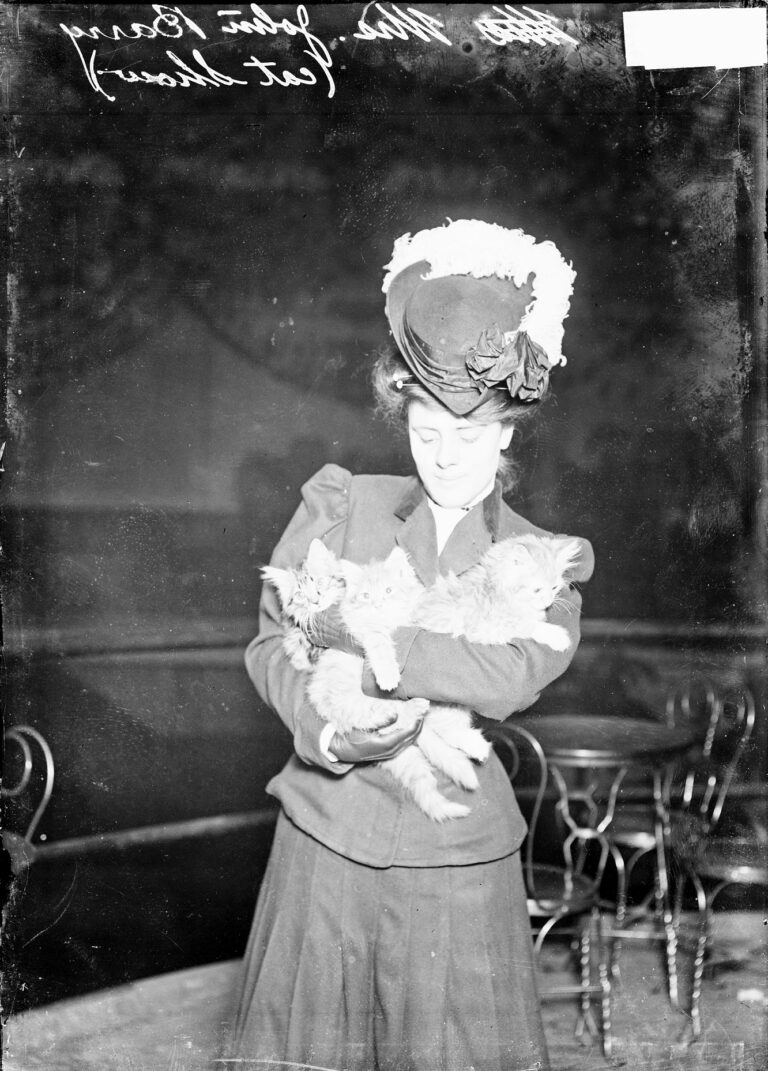
Mrs. John Barry standing, holding kittens at a cat show, Chicago, 1906. DN-0004489, Chicago Daily News collection, CHM
International Cat Day was started on August 8, 2002, to raise awareness about care and protection of domestic cats, but cat appreciation dates back much further in Chicago. The city is home to one of the first cat fancier organizations, or cat breed registries, in the United States—the Beresford Cat Club of America.
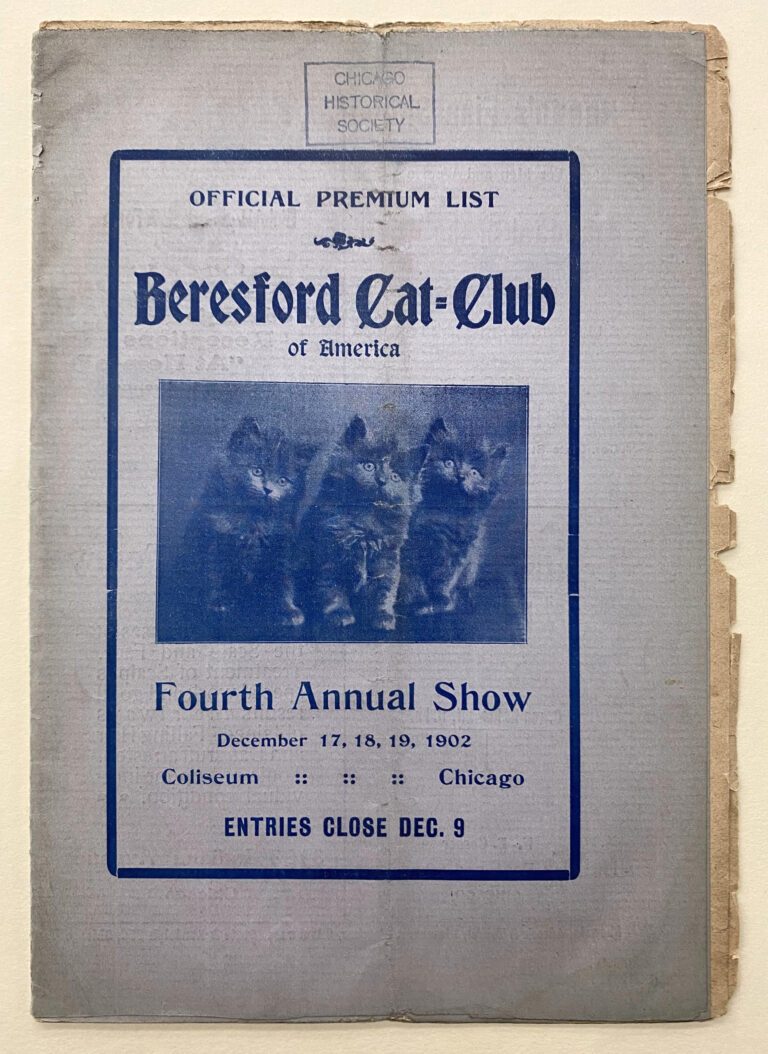
Cover of the Beresford Cat Club’s Fourth Annual Show Official Premium List, 1902. Photograph by CHM staff
The Beresford Cat Club was organized in 1899 and named after Lady Marcus Beresford (née Louisa Catherine Ridley), a cat breeder who in 1898 formed the Cat Club in England. Lady Beresford was a friend of the Beresford Cat Club’s first president, Mrs. Adele Clinton Locke, who kept, bred, and imported cats along with her duties as the wife of a rector of Grace Episcopal Church in Chicago. She supported charitable works in the city with the income she earned from her cat kennels and encouraged her friends to breed cats and exhibit them at shows to supplement household income.
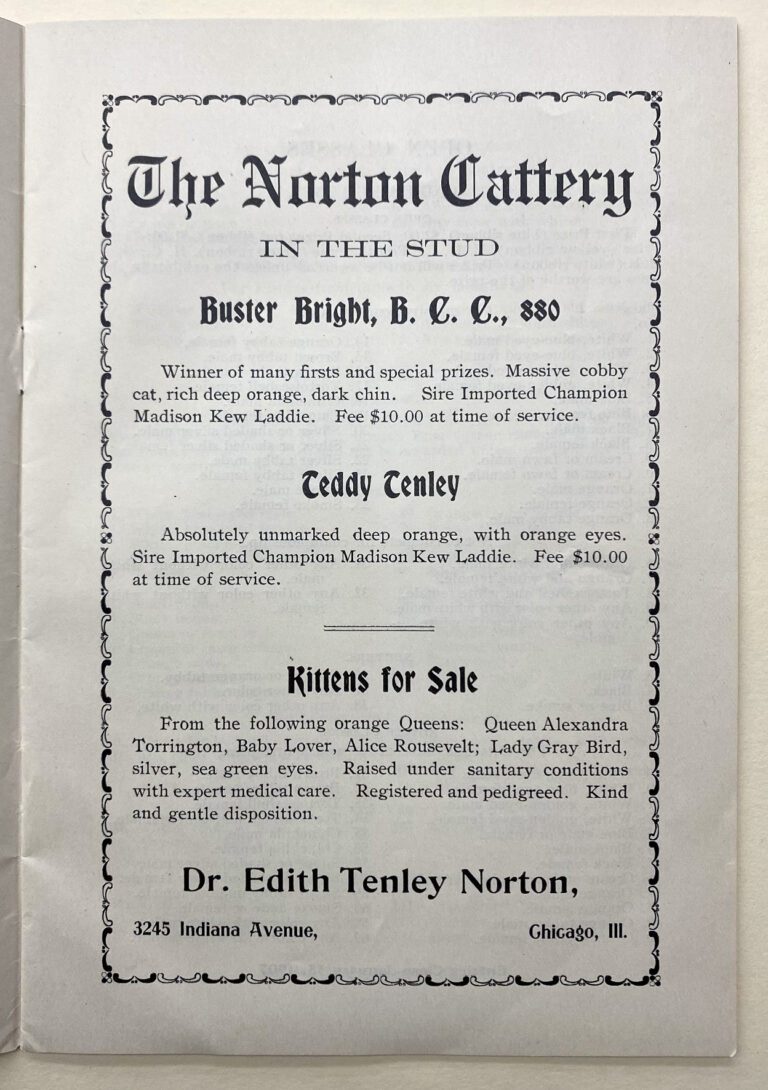
Advertisement for the Norton Cattery in the 1907 Beresford Cat Club show’s Official Premium List. Photograph by CHM staff
Though the club was officially national, many of the early officers of the club were Chicago-based. In 1899, Mrs. Locke was joined by: vice presidents Mrs. Josiah Cratty, Mrs. Eames Colburn, treasurer Mrs. Charles Hampton Lane, corresponding secretary Mrs. Chauncey F. Smith, and recording secretary Mrs. Charles DeWitt. The club’s first board of directors were Mrs. Elwood H. Tollman, Mrs. William Penn Nixon, Mrs. Jerome H. Pratt, Mrs. M. Fisk-Green, and Miss Lucy C. Johnstone.
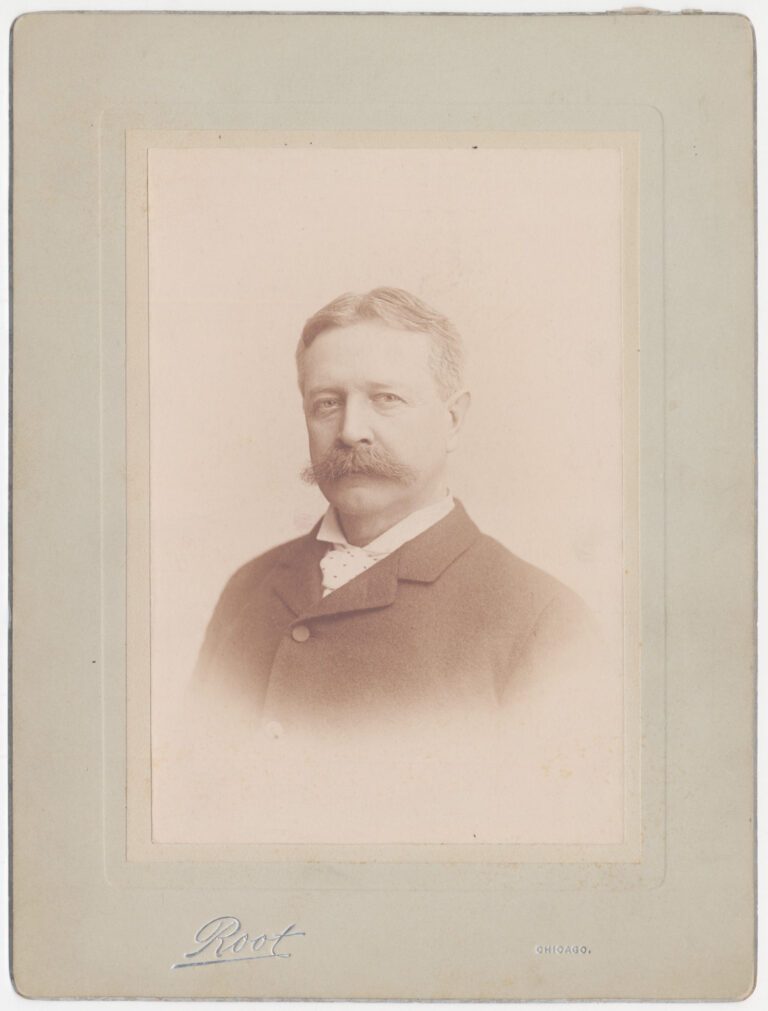
Portrait of John G. Shortall captured by the studios of William J. Root, c. 1892. CHM, ICHi-065460
The club was sanctioned by John G. Shortall, one of the Chicagoans who created the Illinois Society for the Prevention of Cruelty to Animals in 1869. Shortall was also instrumental in the formation of the American Humane Association in 1877, which he hoped would lobby Congress “to protect animals in transit from the West to the East.”
The Beresford Cat Club started the American Stud Book on Cats, thus establishing a registering body for purebred cats in the United States. The first four volumes of the stud book were published between 1899 and 1905. The club also established the first American Cat Show Rules, which standardized the evaluation of cats at US cat shows.
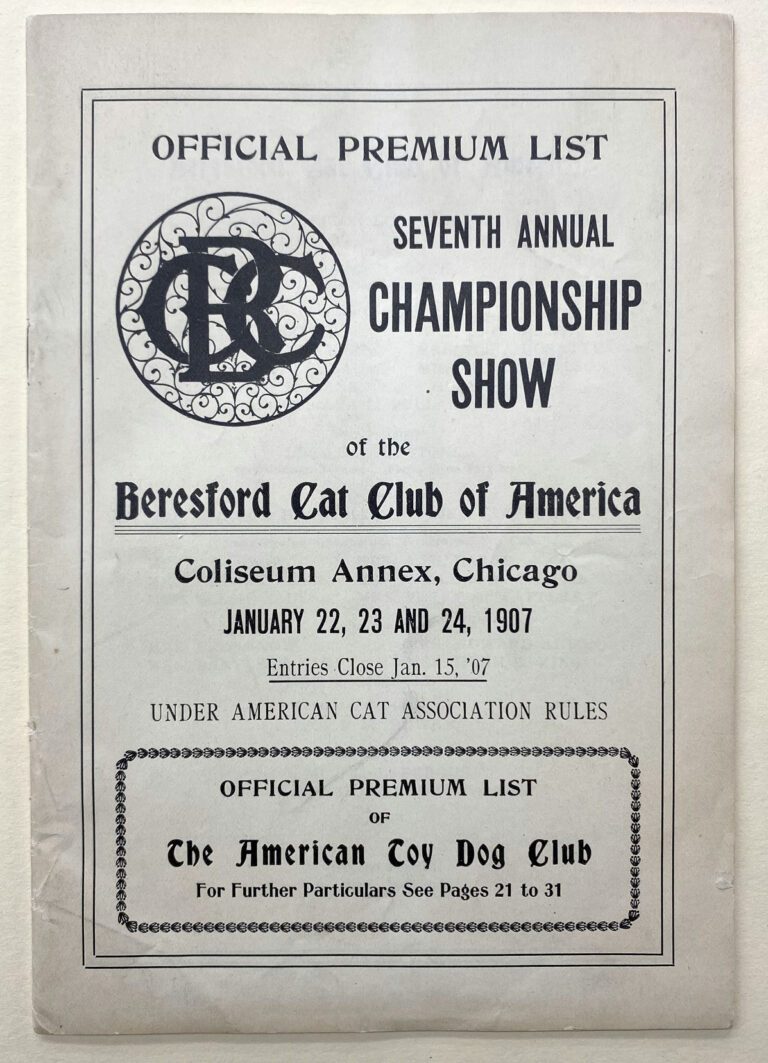
Cover of the Beresford Cat Club’s Seventh Annual Champion Show Official Premium List, 1905. Note the “Under American Cat Show Rules.” Photograph by CHM staff
With these rules in place, they hosted an annual cat show in Chicago. At these shows, cat and cattery owners would show their cats in classes according to their cat’s coloring and markings. They gave cash prizes in numerous categories and to cats of all types, from pedigree breeds to “novice” classes. Special awards were also sponsored by individuals who offered prizes of medals, silver cups, and brushes. At their January 1900 show, they handed out 178 prizes, making them one of the most successful cat shows in the country.
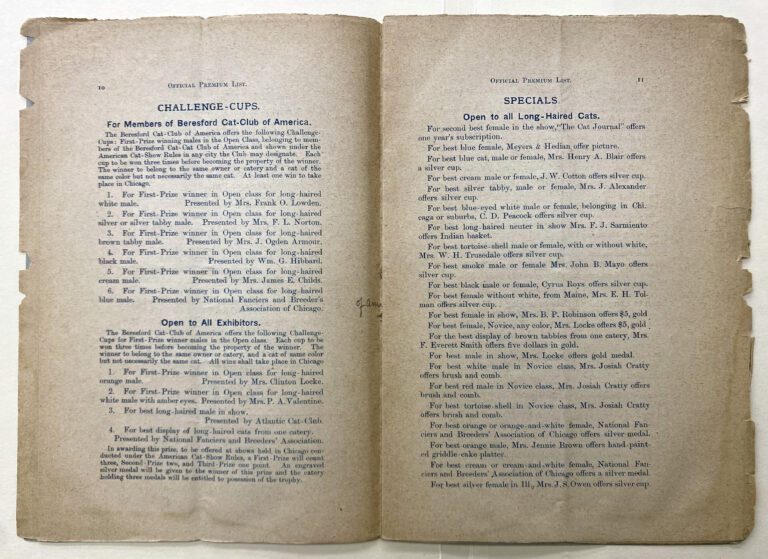
Pages from the 1902 Beresford Cat Club show’s Official Premium List. Photograph by CHM staff
Other cat fancier clubs existed in the United States at the time, including the Cat Fanciers’ Association, which split from the Beresford Cat Club following the 1906 annual meeting, but for a short period of time the Beresford Cat Club was the most powerful cat society in the country. The club renamed itself to the American Cat Association in 1906, and the organization continues to this day.
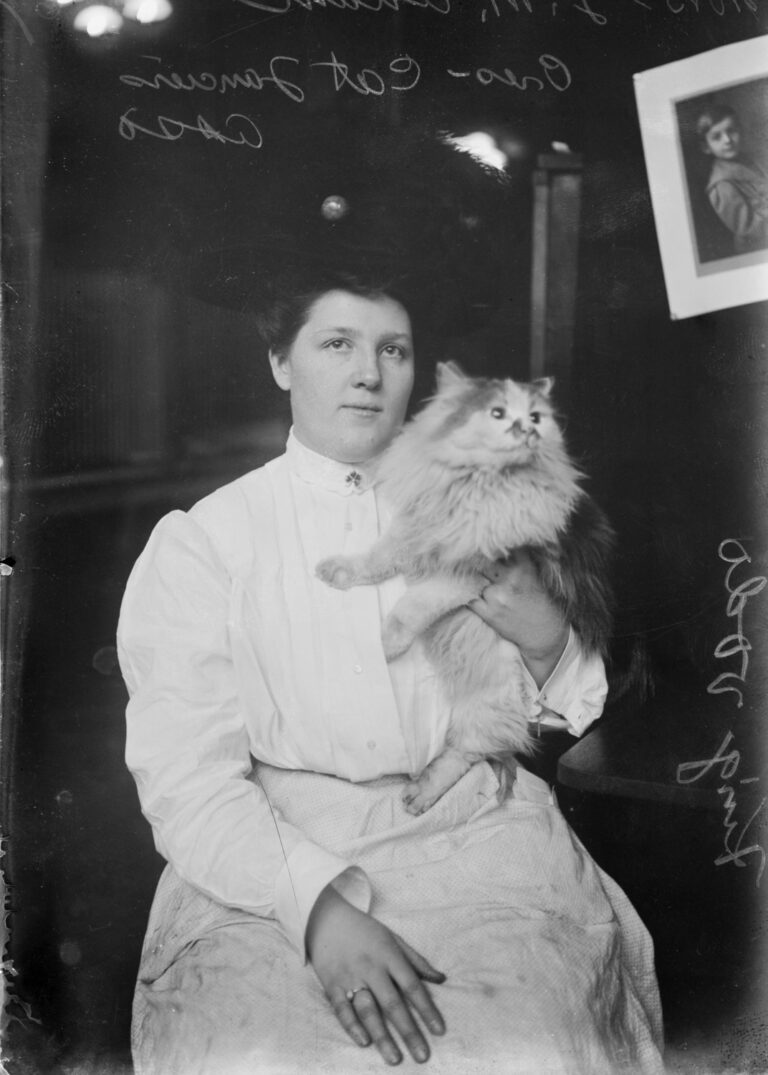
Mrs. J. M. Adam, president of the Cat Fanciers’ Association, holding a cat named King Vodo, Chicago, 1908. DN-0005749, Chicago Daily News collection, CHM
You can find the documents featured in this post at CHM’s Abakanowicz Research Center (call no. F38MB.B4), which is always free to visit.